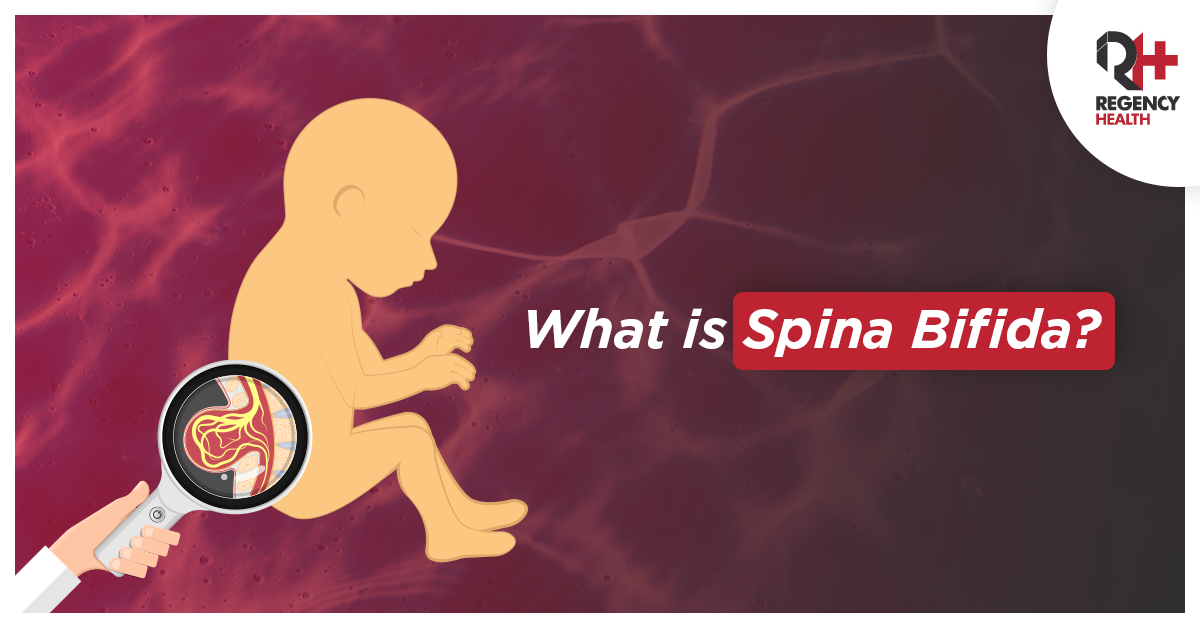
Spina Bifida is the most common permanently disabling birth defect that is associated with life. It is a condition in which the neural tube, a layer of cells that ultimately develops into the brain and spinal cord, fails to close completely during the first few weeks of embryonic development. As a result, when the spine forms, the bones of the spinal column do not close completely around the developing nerves of the spinal cord. Part of the spinal cord may stick out through an opening in the spine, leading to permanent nerve damage. Because spina bifida is caused by abnormalities of the neural tube, it is classified as a neural tube defect.
Typically occurring within the first 28 days of pregnancy while the neural tube is forming, Spina Bifida often occurs before a woman knows she is pregnant. Commonly referred to as the “snowflake condition” of birth defects because no two cases are the same, Spina Bifida can range from mild to severe. The severity depends on everything from the size of the opening to the location of the spine.
Spina Bifida Types
There are three main types of spina bifida:
- Spina Bifida Occulta is a mild form of spina bifida. The spinal cord and surrounding tissues stay inside the baby. But the lower spine doesn’t form as it should. The child may have a hairy patch, dimple, or birthmark over the area of the defect. Or the problem may not have any visible marks.
- Meningocele is a moderate form of spina bifida. In this, the fluid-filled sac that surrounds the spinal cord forms outside of the body in the spine area. The sac does not contain the spinal cord or nerves.
- Myelomeningocele is the most severe type. Part of the spinal cord and nerves form outside the body. They are contained in a fluid-filled sac that bulges from the baby’s back. Related problems can include a loss of feeling below the level of the opening, weakness or paralysis of the feet or legs, and problems with bladder and bowel control. Some affected individuals have additional complications, including a buildup of excess fluid around the brain (hydrocephalus) and learning problems.
Spina Bifida Causes
Scientists do not know precisely what causes spina bifida. It is most likely due to a combination of inherited (genetic), environmental, and nutritional factors. If an infant is born with spina bifida, there is a higher chance that a future sibling will have the same condition.
Spina Bifida Symptoms
Symptoms can occur a bit differently in each child. They can include:
- The area on the back that looks abnormal, such as a small hairy patch, dimple, or birthmark, or a pouch-like bulge (sac)
- No feeling below the place on the spine where the sac is
- Not able to move his or her legs (paralysis)
- Constipation or incontinence
The baby may also have other problems such as:
- Increased fluid and pressure in the head area (hydrocephalus)
- Heart problems
- Bone problems
- The lower level of intelligence
Spina Bifida Diagnosis: How is Spina Bifida Diagnosed
Spina Bifida can be detected in utero by one of the following tests:
- A blood test during the 16th to 18th weeks of pregnancy.
- An ultrasound of the fetus. This is also called a sonogram and can show signs of Spina Bifida such as an open spine.
- A test where a small amount of the fluid from the womb is taken through a thin needle. This is called maternal amniocentesis and can be used to look at protein levels.
Spina Bifida Treatment
Currently, there is no cure for spina bifida, but there are a number of treatments available to help manage the disease and prevent complications.
In some cases, if diagnosed before birth, the baby can undergo surgery while still in the womb in an effort to repair or minimize the spinal defect.
Treatment after birth may include ongoing surgery, medications, and physical and behavioral therapy, depending on the type and severity of the defect, your child’s age, and overall health as well as personal preferences.
With the right treatment and support, many children with spina bifida survive well into adulthood. It can be a challenging condition to live with, but many adults with spina bifida are able to lead independent and fulfilling lives.
Providing the highest standards of quality care & expertise in neurosurgery, our expert team has been at the forefront of treating a variety of neurological disorders using the most efficient and successful methods. With the patient-centric approach, expert consultation, latest diagnostic facilities, and gold standards in treatment & care; we welcome you to Regency Healthcare and assure you the best care a hospital can provide.

 Call-an-Ambulance
Call-an-Ambulance



